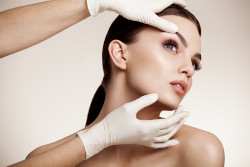Ukraine, 36011, Poltava, prospekt Pervomayskiy 9 +38 (0532) 56-02-11+38 (095) 688 25 07
List of tests before rhinoplasty
 To make the rhinoplasty a successful procedure and confirm that patient would not have complications in the future, it is necessary to prepare properly: you should consider all the indications and contraindications for the plasty, pass the tests and undergo a series of examinations. Let’s consider the specifics of the preparatory stage for rhinoplasty.
To make the rhinoplasty a successful procedure and confirm that patient would not have complications in the future, it is necessary to prepare properly: you should consider all the indications and contraindications for the plasty, pass the tests and undergo a series of examinations. Let’s consider the specifics of the preparatory stage for rhinoplasty.
Indications for rhinoplasty
The plasty can be carried out in the event of dissatisfaction with the size or shape of the nose or according medical reasons, when violation of the nose shape leads to difficult breathing and health problems.
Indications for surgery:
- Excessive length of the nose;
- Large nostrils;
- Crook in the nose;
- Irregular shape on the tip of the nose;
- Nose deformity due to injury;
- Congenital curvature of the nose;
- Inability of nasal breathing due to the septal deviation or other violations of the nose shape.
Contraindications:
- Oncology;
- Diabetes;
- Diseases of nasopharynx, throat and other organs of the respiratory system;
- HIV, hepatitis and all forms of other incurable viral diseases;
- Hemophilia;
- Inflammatory processes in the correction area;
- Diseases of heart, blood vessels and lungs;
- Mental instability.
Plasty preparation aspects
 In order to exclude the presence of contraindications and create all the conditions for the operation, you must undergo an examination, pass tests and complete all the doctor's recommendations; that will prepare the body to carry out a serious intervention and reduce risks.
In order to exclude the presence of contraindications and create all the conditions for the operation, you must undergo an examination, pass tests and complete all the doctor's recommendations; that will prepare the body to carry out a serious intervention and reduce risks.
Preoperative recommendations of doctors
The decision to conduct the procedure is preceded by medical examination. Plastic surgeon carries out a public poll, which allows you to identify the causes of patient dissatisfaction with their nose in order to project a course of action for the correction and estimate the condition of the tissue. The doctor informs about the possible anatomical limitations, which may prevent from full achieving of the desired effect, after consultation and examination. Each patient receives a list of recommendations from the doctor. A month before the correction it is recommended to give up smoking, stop drinking alcohol, a week before the procedure you should stop taking potent medicines, blood thinners or hormones. There are a number of specific preparations, whose intake is prohibited before the test and for a month after the surgery. During the consultation the plastic surgeon provides a list of these preparations.
The list of tests, which are required before the rhinoplasty:
- Clinical blood analysis and biochemical blood assay;
- Analysis for proserosyme;
- Analysis for RW, HIV;
- Analysis for hepatitis C and B;
- X-ray analysis of the paranasal sinuses;
- Electrocardiogram;
- Analysis for blood group and Rh factor.
Additional surveys
If the patient has any health problems, the following additional diagnostic procedures can be assigned before the procedure:
- If the patient has disorders of the endocrine system, the analysis of the hormones level may be assigned;
- If the patient has gastrointestinal tract disorders, the endoscopic examination of the stomach may be assigned;
- If there are suspicions regarding the mental health, the doctor can send the person to the psychotherapist;
- If there are suspicions regarding a problem with the blood vessels of the brain, the EEG is performed.
To make the plastic surgery a successful procedure and confirm that patient would not have complications in the future, it is very important to pay attention to the period of preparation to the operation. Passing of all the necessary tests, open conversation with a plastic surgeon and a survey will give the necessary information for a successful rhinoplasty and help you to avoid the risks. In order to get more information regarding this plastic surgery, visit our information section.
specialists of the Clinic for Plastic Surgery
08-09-2017
Similar news
